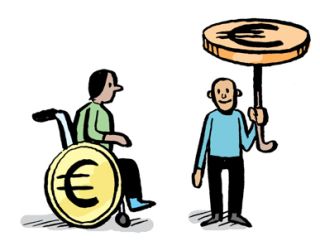The Ability to Work

Results from Census 2016 provide the most recent insight into the scale and nature of disability in Ireland. In a document published in November 2017, the CSO reported that a total of 643,131 people had a disability in Ireland; equivalent to 13.5 per cent of the population. The most common disability was a difficulty with pain, breathing or other chronic illness which was experienced by 46.1 per cent of all people with a disability. This was followed by a difficulty with basic physical activities, experienced by 40.9 per cent. The report found that both these disabilities were strongly age-related. It also showed that 1.2 per cent of the population were blind or had a sight related disability (54,810 people); 1.4 per cent of the population suffered from an intellectual disability (66,611 people); 2.2 per cent of the population were deaf or had a hearing related disability (103,676 people); 2.6 per cent of the population had a psychological or emotional condition (123,515 people); 3.3 per cent of the population had a difficulty with learning, remembering or concentrating (156,968 people); 5.5 per cent of the population had a difficulty with basic physical activities (262,818 people); and 6.2 per cent of the population had a disability connected with pain, breathing or another chronic illness or condition (296,783 people).
The Census 2016 data also revealed that there was 176,445 persons with a disability in the labour force, representing a participation rate of 30.2 per cent; less than half that for the population in general. These findings reflect earlier results from Census 2011 (CSO, 2008), the 2006 National Disability Survey (CSO, 2010) and a QNHS special module on disability (CSO, 2004).
A 2017 ESRI report examined the employment transitions of people with a disability and found that among those of working age most (82 per cent) had worked at some stage in their life but that 35 per cent had been without work for more than four years (Watson et al, 2017). It also found that were Government policy to facilitate the employment of people with a disability who want to work, some 35,600 additional people with a disability would join the active workforce; a figure equivalent to 1.5 per cent of the 2017 labour force (Watson et al, 2017:56).
This low rate of employment among people with a disability is of concern. Apart from restricting their participation in society it also ties them into State-dependent low-income situations. Therefore, it is not surprising that Ireland’s poverty figures reveal that people who are ill or have a disability are part of a group at high risk of poverty. In fact the latest Survey on Income and Living Conditions indicated that 39.1 per cent of people unable to work due to illness or disability lived in poverty.
Social Justice Ireland believes that further efforts should be made to reduce the impediments faced by people with a disability to obtain employment. In particular, consideration should be given to reforming the current situation in which many such people face losing their benefits, in particular their medical card, when they take up employment. This situation ignores the additional costs faced by people with a disability in pursuing their day-to-day lives – see Annex 3 for our proposals on a cost of disability allowance. For many people with disabilities the opportunity to take up employment is denied to them and they are trapped in unemployment, poverty, or both.
References
Central Statistics Office (2004) Quarterly National Household Survey: Special Module on Disability Quarter 1 2004. Dublin: Stationery Office.
Central Statistics Office (2008) National Disability Survey 2006 – First Results. Dublin: Stationery Office.
Central Statistics Office (2010) National Disability Survey 2006 – Volume Two. Dublin: Stationery Office.
Central Statistics Office (2012) Census 2011 Profile 8: Our Bill of Health – Health, Disability and Carers in Ireland. Dublin: Stationery Office.
Watson, D., M. Lawless and B. Maitre (2017) Employment Transitions among People with Disabilities in Ireland: an analysis of the Quarterly National Household Survey 2010-2015. Dublin: ESRI.